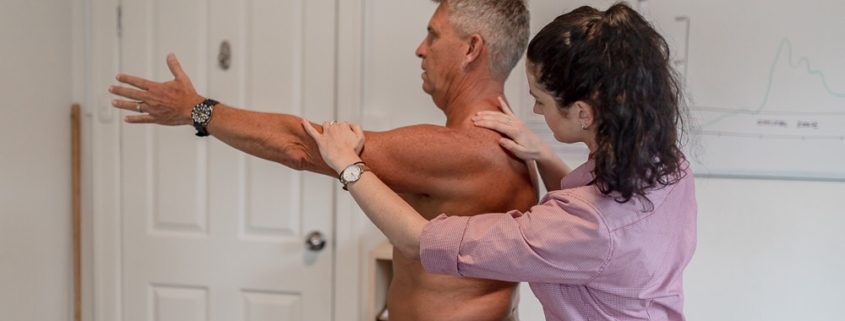Why we use a Full Body Assessment at Barefoot Physiotherapy
At Barefoot Physio we treat the whole person, not just the specific injury that brought you in. In physio we are often told to “look at the joint one above and one below”. This means if you come in with knee symptoms, your hip and ankle will also be assessed and potentially treated. The Barefoot Treatment Plan goes one further and assesses your whole body in our ‘full body assessment’ in order to find where the restriction and cause of compensation is coming from. This includes assessing your nerves, muscles, joints and movements to gain a ‘snapshot’ of your individual body.
What is it?
A full body assessment gives us a list of significant findings in your body (or what we call 3’s). Significant findings may include movements such as hip flexion (bringing knee to chest) or cervical rotation (turning head); muscles such as your bicep or gastrocnemius (calf); or joints such as your talocrural (ankle). We are feeling for points of higher muscle tone (like a “trigger point”), or joints that don’t glide as smoothly as they can. Similar to our neurodynamic tests, we measure movements ranges to “R1” or the first point of resistance where your body starts to show signs of being unhappy in this movement via muscle guarding.
What do we tend to find?
As we complete our scan (full body assessment), it regularly reminds our clients of previous injuries or issues that may have been symptomatically resolved but are still presenting with lingering restriction or altered loading patterns. For example, a client may present with hip symptoms in their squats at the gym but a full body scan brings up an old shoulder injury that still niggles occasionally that they haven’t thought relevant. All of this adds to the picture of the accumulation of strain on your body. We collaborate with our clients in both isolating areas of interest in the body but also to then prioritise our findings for treatment. We then use our treatment direction tests (TDTs) to narrow to what is relevant and important for your body. Once we’ve narrowed it down we can effectively treat, retrain and strengthen a handful of areas and keep your whole body happy.
More reading next week!
For more about TDT’s (treatment direction tests that help us work out what is most important to treat) watch out for our blog next week! If you’re interested in booking a session you can here








Leave a Reply
Want to join the discussion?Feel free to contribute!